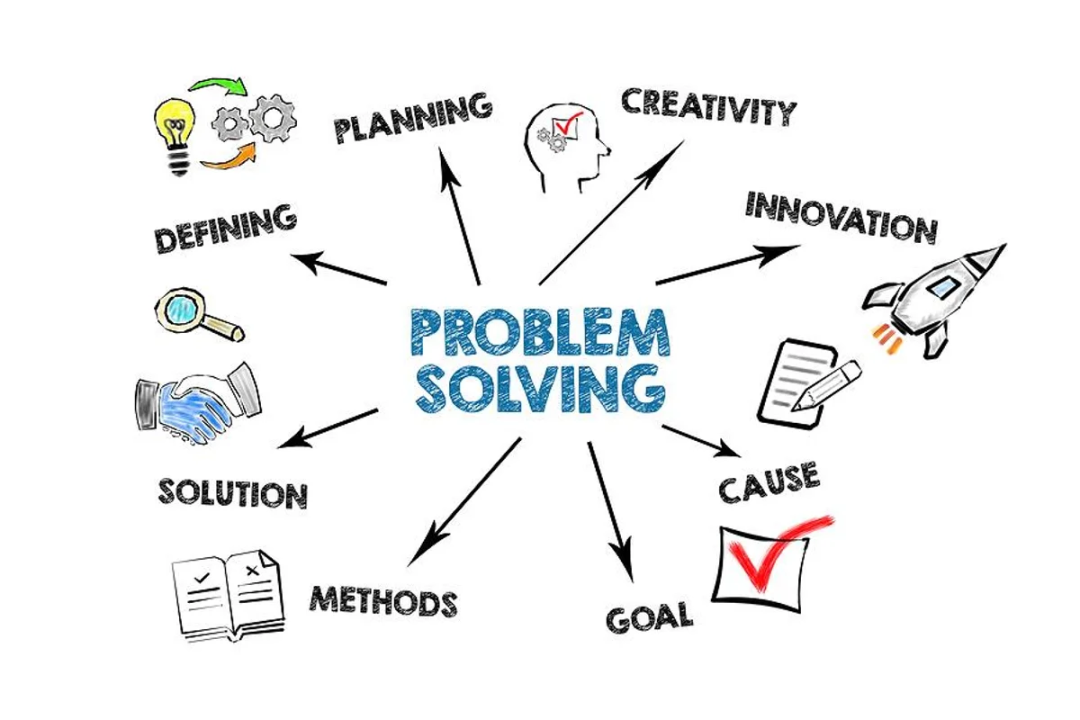
Day 4: Problem Solving
Dhairya Seth
Trainee @ NEC Corporation India Pvt Ltd. | Open Source Contributor | Kubernetes | Flutter Developer | Firebase | Django Developer
Problem solving is the act of defining a problem; determining the cause of the problem; identifying, prioritizing, and selecting alternatives for a solution; and implementing a solution.
The Significance of Problem-Solving
1. Empowerment: Being able to solve problems effectively gives people the ability to take charge of their lives and mold their surroundings. Problem solvers become proactive agents of change, armed with the means and self-assurance to surmount challenges and realize their objectives, as opposed to being passive recipients of fate.
2. Resilience: The foundation of growth and endurance in the face of adversity is resilience. Through teaching people to endure in the face of setbacks, adjust to changing circumstances, and learn from mistakes, problem-solving builds resilience. Every issue resolved serves as evidence of one's resiliency and fortifies the will to meet new obstacles head-on with bravery and tenacity.
3. Innovation: Solving difficulties encourages people to think creatively, consider many viewpoints, and come up with original solutions to challenging issues. Solving problems sparks creativity and propels advancement in all spheres of human endeavor, be it technological innovation, scientific breakthroughs, or social system transformation.
Strategies for Effective Problem-Solving
1. Identify the issue:
Clearly defining the problem's scope, objectives, and constraints is the first step towards solving any challenge.?
Spend some time evaluating the circumstances, determining the underlying reasons of the issue, and setting specific goals for its resolution.?
Gaining a thorough understanding of the issue at hand sets the stage for tackling problems in an efficient manner.
领英推荐
2. Break it Down:
Although complicated issues can frequently appear daunting, they can be made more approachable by being divided into smaller, more manageable parts. Break the issue up into smaller sub-issues, rank them in order of significance and urgency, then take each one on a step at a time.?
It is possible to keep moving forward and make steady progress in the direction of a solution by segmenting the problem into manageable pieces.?
3. Examine Other Options:?
Steer clear of the pitfall of being obsessed with one particular answer. Rather, come up with a list of several options, investigate other viewpoints, and take into account unorthodox methods of problem-solving.?
In your search for answers, foster creativity, curiosity, and open-mindedness. Additionally, be prepared to change course or adapt as new information becomes available.
4. Seek input and Collaboration:?
In your efforts to solve problems, don't be afraid to ask for input and work together with others. Frequently, new viewpoints and insights from mentors, colleagues, or subject matter experts can illuminate an issue and spark creative solutions
Accept teamwork as a spark for innovation and synergy, and use the network's combined knowledge to solve problems more successfully.
In Conclusion, Problem-solving skills are a source of optimism and resilience in the vast fabric of human experience, helping us navigate the ups and downs of life. By developing our problem-solving skills, we enable ourselves to face challenges head-on with bravery, ingenuity, and resolve, turning setbacks into learning opportunities and hardships into personal development. Let's embrace the spirit of problem-solving as a driver for change, creativity, and advancement as we negotiate the intricacies of the world around us. By working together, we may solve the universe's riddles and create a better future for future generations.